My main focus here is with the return of large (7lb plus) bass from a boat. My brother and I have caught hundreds bass in this category over the years and our approach has been continuosly refined to it’s current state.
We now use circle hooks when bait fishing or barbless hooks when lure fishing. This reduces the risk of deep hooking which means the bass come to the boat with the best chance of being successfully returned.
I personally favour landing a fish using Boga (or similar) grips and I support the belly of the fish on the lift from the sea so that there is no excessive load placed on the fish’s neck/backbone. I dislike using a net as it often rips the membrane between the spikes on the fins. I do appreciate that many other bass anglers put a lot of thought into mesh selection and can land large fish with little damage to the fins.
Once the supported fish is out of the water I’ll decide whether I want to photograph and weigh the fish or whether I simply want to revive it before return. In both cases the fish is then immediately returned to the water to get its breath back.
This is done by having the Bogas attached to the boat on a ten foot elasticated leash. The aim of using a form of elastic in the leash (I’m currently using two kayak paddle leases linked together as they are designed for saltwater use) is to reduce the motion from the boat being transmitted directly to the fish on the end of the leash in the water.
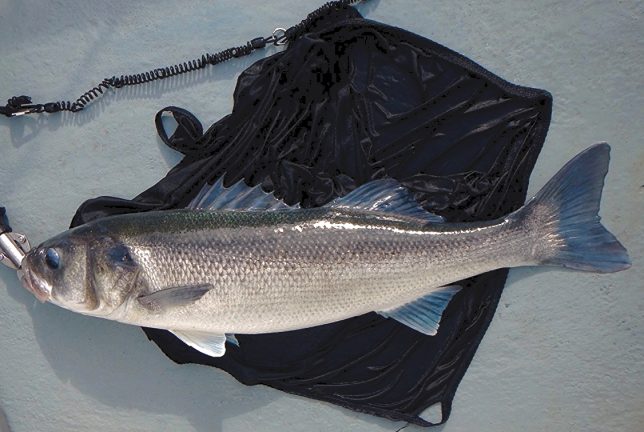
If a photo is required camera’s will be retrieved and readied. The weigh sling (a lightweight affair from the carp world) is wetted and placed on the deck and the scales zeroed. This takes a couple of minutes. If the fish is to be returned without photos/weighing I tend to leave it to recover for 3 or 4 minutes.
A gentle retrieval of the fish on the leash brings it back to hand and the fish is lifted, again with support bellow the belly, back into the boat. Having handled many thousands of Bass I know I can hold the fish by the gill cover and from below so that I don’t cut myself or come into contact with the gill rakers themselves. For those less confident I would recommend holding the fish with the Bogas holding the head (I’ve added pictures of both methods).
hand and the fish is lifted, again with support bellow the belly, back into the boat. Having handled many thousands of Bass I know I can hold the fish by the gill cover and from below so that I don’t cut myself or come into contact with the gill rakers themselves. For those less confident I would recommend holding the fish with the Bogas holding the head (I’ve added pictures of both methods).
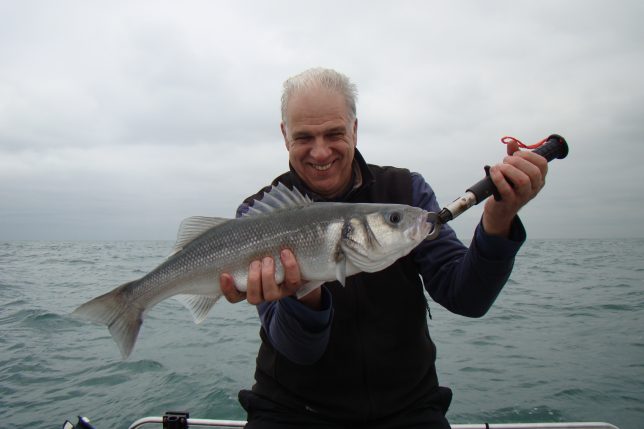
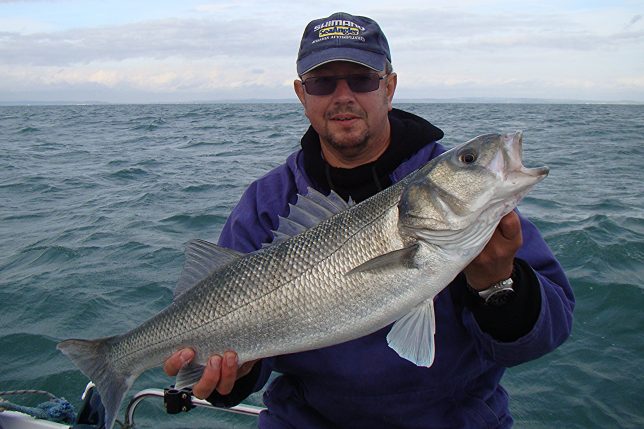
The Seaqualizer
On the odd occasion, normally only seen now with 12lb plus fish, there can be some gassing of the bass. This is where the swim bladder has expanded and the bass has not been able to expel the gas during the recovery period. This can be spotted as the bass is unable to right itself on the leash (when you look down on the fish you’ll see a lot of white colour from thwe fishes flank rather than the dark from its back).
Under these circumstances I will attach a Seaqualizer release tool (see www.sequalizer.com and look at the Shallow Water Striper version) to a spare rod which is weighted down for bass with a 1lb lead. The tool is set to release the fish at 30 feet. I’ll retrieve the fish from the leash and attach it to the Seaqualizer which has a gripping mechanism similar to the Boga grip (see picture). The fish is then dropped to 30 feet and held for a minute or so. In all cases I’ve felt the fish quickly become more active and I’ve then let the lead drop to the 50 feet mark. During this final descent the fish will be released at 40 feet with some downward momentum which allows it to swim off.
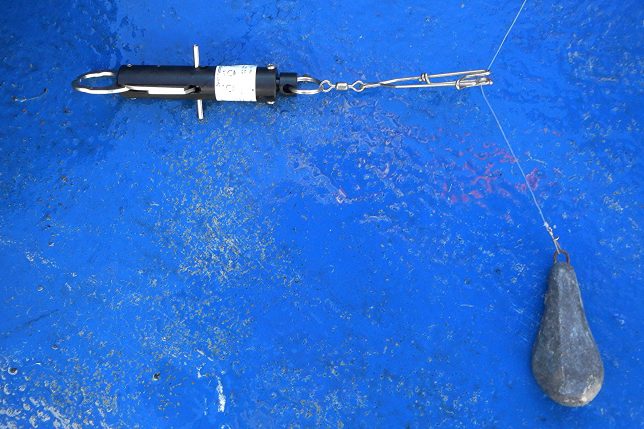
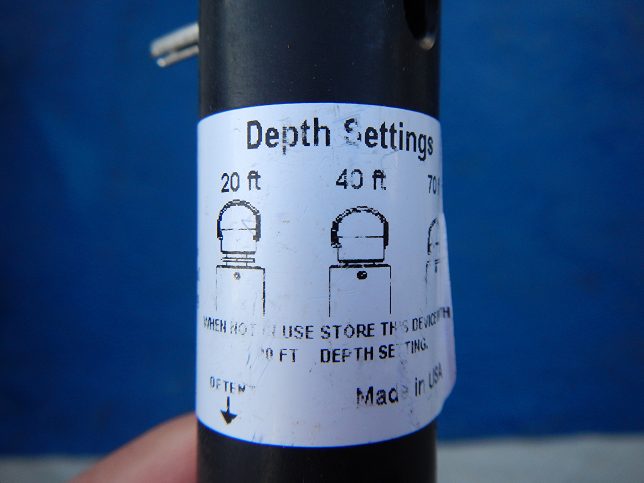
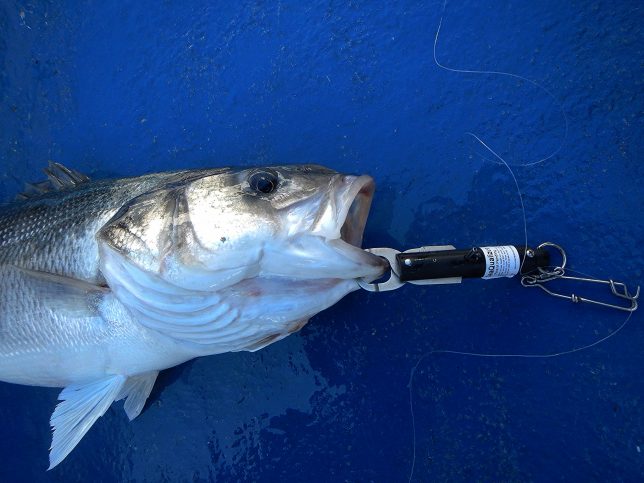
Irrespective of the method used to release the fish I will continue the boats drift and monitor the surface of the water. Prior to using this approach I had experienced released fish return to the surface. However since adding the refinements of the leash and the Seaqualizer where appropriate I have not seen a single large fish return to the surface. The added bonus is the same tool can be used on Wreck pollack once I’ve caught enough for the table. With Pollack I’m fishing deeper water and I’ll set the Seaqualizer to release at 40 foot deep.
Whilst I know that, at present in 2018, we have to return all of our Bass I would encourage readers to return all of their large bass once restrictions are lifted as these are the bass we want to have the best chance of breeding. They’ve avoided capture for many years and are often in the absolute peak of condition. These are the fish I want to be rebuilding stocks and I’m confident that by following the approach outlined above I’m doing all I can to make sure they are returned to the sea with the best possible chance of survival.
Author: Clive Hodges